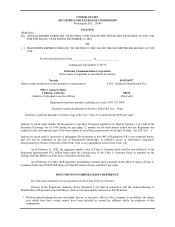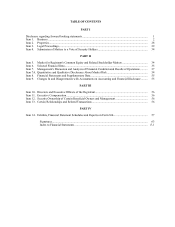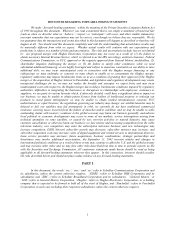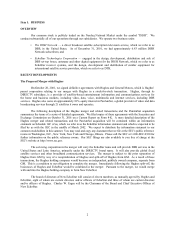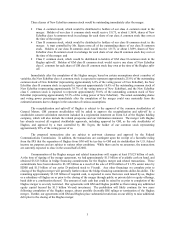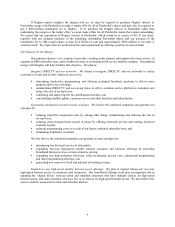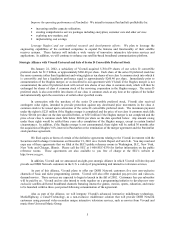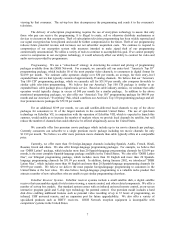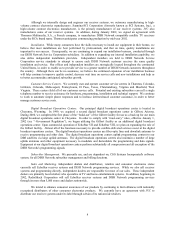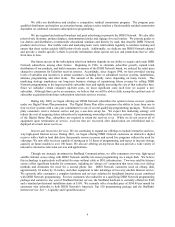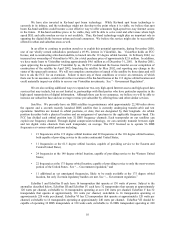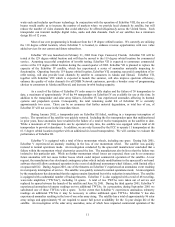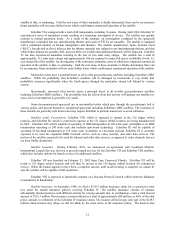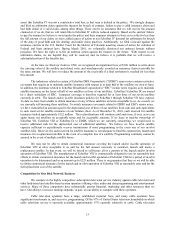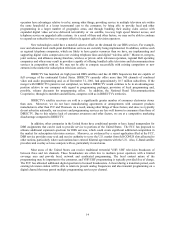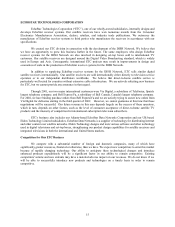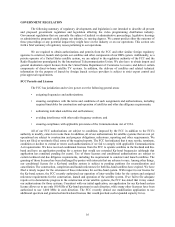Dish Network 2001 Annual Report Download - page 8
Download and view the complete annual report
Please find page 8 of the 2001 Dish Network annual report below. You can navigate through the pages in the report by either clicking on the pages listed below, or by using the keyword search tool below to find specific information within the annual report.6
As part of this alliance, Jean-Marie Messier, Chairman and CEO of Vivendi, has become a member of our
Board of Directors, and he will continue as a director following our proposed Hughes merger.
EchoStar VII
EchoStar VII was launched on February 21, 2002 from Cape Canaveral, Florida. EchoStar VII will be
tested at the 129 degree orbital location and will then be moved to the 119 degree orbital location for commercial
service. Assuming successful completion of in-orbit testing, EchoStar VII is expected to commence commercial
service at the 119 degree orbital location during the second quarter of 2002. EchoStar VII is planned to replace the
capacity of the EchoStar IV satellite, which has experienced a series of anomalies materially impacting its
functionality. Operating from the 119 degree orbital location, EchoStar VII, assuming successful completion of in-
orbit testing, will also provide local channels by satellite to consumers in Alaska and Hawaii. EchoStar VII,
together with EchoStar VIII which is expected to launch this summer, will also improve spectrum efficiency,
enhance the quality of video channels for all DISH Network customers, provide a broader array of programming
choices to consumers in Alaska and Hawaii, and increase in-orbit backup capacity.
DISH NETWORK
We started offering subscription television services on the DISH Network in March 1996. As of December
31, 2001, the DISH Network had approximately 6.83 million subscribers. We now have seven DBS satellites in
orbit that enable us to offer over 500 video and audio channels, together with limited data services and high
definition and interactive TV services, to consumers across the contiguous United States. We believe that the DISH
Network offers programming packages that have a better “price-to-value” relationship than packages currently
offered by most other subscription television providers. As of December 31, 2001, there were approximately 18.4
million subscribers to DBS and other direct-to-home satellite services in the United States. We believe that there are
more than 88 million total pay television subscribers in the United States, and that there continues to be significant
unsatisfied demand for high quality, reasonably priced television programming services.
Components of a DBS System
In order to provide programming services to DISH Network subscribers, we have entered into agreements
with video, audio and data programmers, who deliver their programming content to our digital broadcast operations
centers in Cheyenne, Wyoming and Gilbert, Arizona, via commercial satellites, fiber optics or microwave
transmissions. We monitor those signals for quality, and can add promotional messages, public service
programming or other information. Equipment at our digital broadcast operations centers then digitizes,
compresses, encrypts and combines the signal with other necessary data, such as conditional access information.
We then “uplink” or transmit the signals to one or more of our DBS satellites which we then broadcast directly to
DISH Network subscribers.
In order to receive DISH Network programming, a subscriber needs:
•a satellite antenna, which people sometimes refer to as a “dish,” and related components;
•an integrated receiver/decoder, which people sometimes refer to as a “satellite receiver” or “set-top
box”; and
•a television set.
Set-top boxes communicate with our authorization center through telephone lines to, among other things,
report the purchase of pay-per-view movies and other events.
Conditional Access System. We use conditional access technology to encrypt the programming so only
those who pay can receive the programming. We use microchips embedded in credit card-sized access cards, or
“smart cards” to control access to authorized programming content. We own 50% of NagraStar LLC, a joint venture
that provides us with smart cards. Nagra USA owns the other 50% of NagraStar. NagraStar purchases these smart
cards from Nagra Plus SA, a Swiss company. These smart cards, which we can update or replace periodically, are a
key element in preserving the security of our conditional access system. When a consumer orders a particular
channel, we send a message by satellite that instructs the smart card to permit decryption of the programming for

